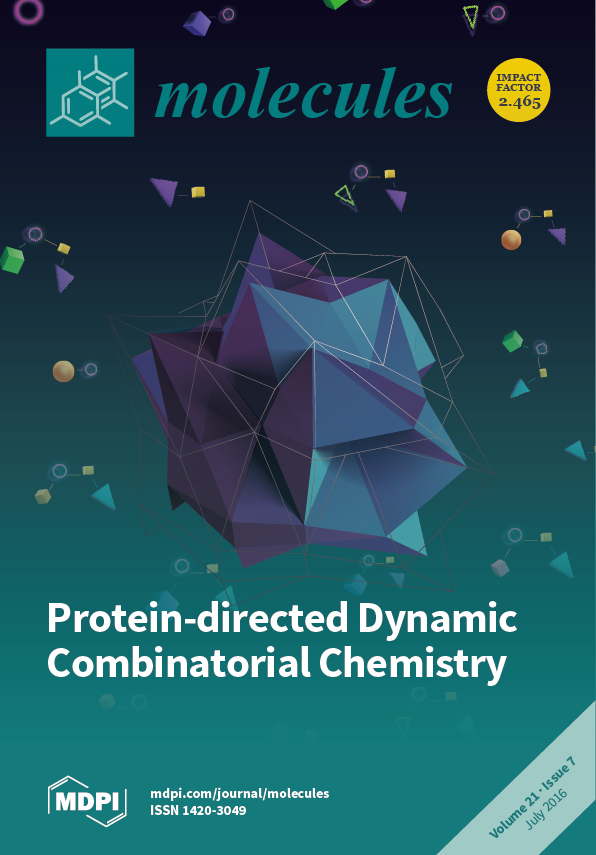Open AccessArticle
Controlled Release of Nor-β-lapachone by PLGA Microparticles: A Strategy for Improving Cytotoxicity against Prostate Cancer Cells
by
Marcilia P. Costa 1,2, Anderson C. S. Feitosa 1, Fátima C. E. Oliveira 1, Bruno C. Cavalcanti 1, Eufrânio N. Da Silva 3, Gleiston G. Dias 3, Francisco A. M. Sales 4, Bruno L. Sousa 4, Ito L. Barroso-Neto 5, Cláudia Pessoa 1,6, Ewerton W. S. Caetano 7,*, Stefano Di Fiore 8, Rainer Fischer 8,9, Luiz O. Ladeira 10 and Valder N. Freire 5
1
Department of Physiology and Pharmacology, Federal University of Ceará, 60430-270 Fortaleza, CE, Brazil
2
Department of Pharmacy, Federal University of Piauí, 64049-550 Teresina, PI, Brazil
3
Department of Chemistry, Federal University of Minas Gerais, 31270-901 Belo Horizonte, MG, Brazil
4
Department of Physics, Federal University of Ceará, 60455-760 Fortaleza, CE, Brazil
5
Department of Analytical Chemistry and Physical Chemistry, Federal University of Ceará, 60455-760 Fortaleza, CE, Brazil
6
Oswaldo Cruz Foundation (Fiocruz), 60180-900 Fortaleza, CE, Brazil
7
Department of Secondary School and Teachers College, Federal Institute of Ceará, 60040-531 Fortaleza, CE, Brazil
8
Fraunhofer Institute for Molecular Biology and Applied Ecology IME, 52074, Aachen, Germany
9
Institute for Molecular Biotechnology, RWTH Aachen University, 52074 Aachen, Germany
10
Department of Physics, Federal University of Minas Gerais, 31340-550 Belo Horizonte, MG, Brazil
Cited by 22 | Viewed by 7508
Abstract
Prostate cancer is one of the most common malignant tumors in males and it has become a major worldwide public health problem. This study characterizes the encapsulation of Nor-β-lapachone (NβL) in poly(
d,
l-lactide-co-glycolide) (PLGA) microcapsules and evaluates the cytotoxicity of
[...] Read more.
Prostate cancer is one of the most common malignant tumors in males and it has become a major worldwide public health problem. This study characterizes the encapsulation of Nor-β-lapachone (NβL) in poly(
d,
l-lactide-co-glycolide) (PLGA) microcapsules and evaluates the cytotoxicity of the resulting drug-loaded system against metastatic prostate cancer cells. The microcapsules presented appropriate morphological features and the presence of drug molecules in the microcapsules was confirmed by different methods. Spherical microcapsules with a size range of 1.03 ± 0.46 μm were produced with an encapsulation efficiency of approximately 19%. Classical molecular dynamics calculations provided an estimate of the typical adsorption energies of NβL on PLGA. Finally, the cytotoxic activity of NβL against PC3M human prostate cancer cells was demonstrated to be significantly enhanced when delivered by PLGA microcapsules in comparison with the free drug.
Full article
►▼
Show Figures






